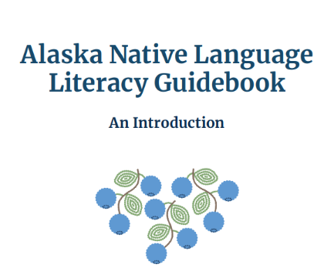- Cama-i, quyana tailuci!
- (Central Yup’ik)
- "Greetings, thank you for coming!"
Alaska Native Language Literacy Guidebook
Alaska Native Language (ANL) Literacy Guidebook - Introduction
The ANL Literacy Guidebook Introduction has been developed to align with Alaska's Reading Playbook. The ANL Literacy Guidebook will consist of 6 sections. The first section serves as an introduction that contextualizes and historicizes Alaska Native Education. The next five sections will explore how the science of reading can incorporate Alaska Native languages, providing examples and resources for communities to develop their educational models.
The ANL Literacy Guidebook serves as a long-term resource for teachers, educators, and language learners, supporting professional development in teaching literacy in Alaska Native languages. This project aims to provide instructional support and empower schools that wish to teach their Native languages while ensuring that language assessment tools adhere to the Reads Act.
The ANL Literacy Guidebook recognizes the need to support all Alaska Native languages. However, Alaska is a big state, and there is room for all students’ languages to be used in our schools throughout Alaska. This resource focuses on Alaska Native languages but also strives to equip educators with the considerations necessary to account for the multilingual learning environment that makes Alaska so unique.
The ANL Literacy Guidebook is being created to provide educators with a tool to help them connect with students and learn more about the unique features of Alaska Native languages. However, while discussing the impacts of reading and writing instruction on Alaska Native people, we had to talk about the history of Alaska Native education, a traumatic experience for many.
The rich culture and language Alaska Natives bring to their school communities are an asset that provides multiple linguistic repertoires that students can draw upon as learners. Studies have shown that literacy development is enhanced through multicultural instruction. We need our students to be bilingual, if not multilingual. The English-only model has not worked for all, has not resulted in higher levels of student achievement, and has caused harm to Native communities and families.





